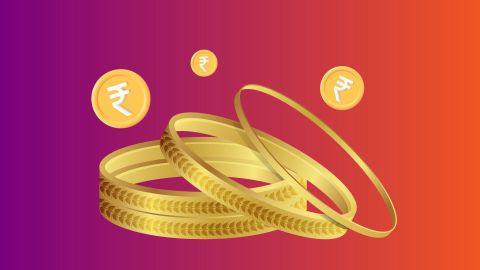2 mins
19 November 2024
Gold is one of the most valuable metals in India, deeply tied to tradition and wealth. Understanding processes like gold smelting is essential for preserving its value and purity. Gold smelting not only enhances the quality of gold but also opens up avenues for better applications, including financial benefits like securing higher gold loans. This guide explores the intricacies of gold smelting, its history, process, and its impact on loan eligibility and value.
History of gold smelting
The history of gold smelting dates back thousands of years, showcasing its evolution and significance. Below is an introduction before the section:
Gold smelting has a rich history, from ancient civilisations to modern industrial applications. Its techniques evolved over centuries.
Gold smelting has a rich history, from ancient civilisations to modern industrial applications. Its techniques evolved over centuries.
- Early smelting techniques began in ancient Egypt around 3,000 BCE.
- Romans refined smelting using advanced furnaces and bellows.
- The Middle Ages saw improvements in gold purity through chemical use.
- Modern smelting developed during the Industrial Revolution, introducing machines for large-scale refining.
How does gold smelting work?
Gold smelting works by heating gold ore or scrap to high temperatures to separate impurities from the pure metal. The process involves specialised furnaces where the ore or scrap is combined with fluxes, such as borax or silica, to remove unwanted materials. Once molten, the impurities float as slag, leaving refined gold at the bottom. This gold is then poured into moulds to cool and solidify. The entire process ensures consistent quality and high purity, essential for jewellery and industrial applications.Gold smelting process
The gold smelting process includes several crucial steps to refine and extract pure gold efficiently. Below is the step-by-step description:- Crushing and milling: Gold ore is crushed into smaller pieces to release the metal.
- Melting: The crushed material is heated in a furnace to liquefy the gold.
- Flux addition: Fluxes are added to remove impurities such as slag.
- Pouring and solidifying: The molten gold is poured into moulds to cool into bars or ingots.
Application of gold smelting
Gold smelting has wide-ranging applications across various industries. It plays a vital role in the jewellery industry, ensuring high-purity gold for intricate designs. The process is essential for recycling gold, converting scrap into usable material. In the electronics industry, smelted gold is used for making components like connectors and circuits due to its excellent conductivity. It also supports the financial sector by providing pure gold for bullion and coins, ensuring a reliable investment option.How does gold purity affect loan eligibility and amount?
Gold purity significantly impacts the loan eligibility and amount borrowers can secure. Bajaj Finance considers the purity of gold when calculating the loan’s value. Higher-purity gold, such as 22K or 24K, fetches a better loan-to-value ratio, ensuring higher amounts. Purity also ensures the authenticity of the gold, reducing risks for the financier. Borrowers with certified high-purity gold can access more competitive interest rates and better repayment options, enhancing financial benefits.Benefits of smelting gold for higher loan value
Smelting gold ensures better purity, directly enhancing its value for securing a gold loan. By refining gold through smelting, borrowers can ensure the jewellery is free from impurities, making it more desirable as collateral for gold loans. High purity smelted gold increases loan eligibility, offering better interest rates and higher loan amounts. Smelting also ensures the gold meets BIS standards, ensuring trust and transparency during the loan application process. With Bajaj Finserv Gold Loan, you can get a loan amount starting from Rs. 5,000 to Rs. 2 crore. You can also benefit from free insurance of gold, multiple repayment options, and more.Frequently asked questions
What is the process of smelting gold?
Smelting gold involves heating gold ore or scrap at high temperatures to extract pure gold. Fluxes like borax are added to remove impurities, which form slag and separate from the molten gold. The pure gold is then poured into moulds to cool and solidify. This process improves the metal’s purity, making it ideal for jewellery, bullion, or industrial applications.
What is the difference between smelting and refining gold?
Smelting gold is the process of extracting pure gold by melting ore or scrap, removing impurities using heat and fluxes. Refining gold, on the other hand, enhances purity further by chemically removing any remaining impurities after smelting. While smelting focuses on separating gold from base materials, refining ensures it reaches the highest purity, often for industrial or investment purposes.
How much gold is lost when melted per gram?
When melting gold, the loss per gram is minimal, typically around 0.5% to 1%. This loss occurs due to the evaporation of trace impurities or handling errors. Smelting processes conducted professionally minimise this loss, ensuring maximum gold recovery. To avoid significant loss, ensure proper handling and professional smelting techniques.
How does gold purity impact the loan amount?
Gold purity directly affects the loan amount offered by institutions like Bajaj Finance. Higher-purity gold, such as 22K or 24K, fetches a better loan-to-value ratio, allowing borrowers to secure larger amounts. Lower-purity gold, containing more alloys, reduces its valuation and the loan eligibility. Ensuring high gold purity through hallmarking ensures transparency and maximises financial benefits.
Show More
Show Less
Bajaj Finserv App for All Your Financial Needs and Goals
Trusted by 50 million+ customers in India, Bajaj Finserv App is a one-stop solution for all your financial needs and goals.
You can use the Bajaj Finserv App to:
Apply for loans online, such as Instant Personal Loan, Home Loan, Business Loan, Gold Loan, and more.
You can use the Bajaj Finserv App to:
Apply for loans online, such as Instant Personal Loan, Home Loan, Business Loan, Gold Loan, and more.
- Explore and apply for co-branded credit cards online.
- Invest in fixed deposits and mutual funds on the app.
- Choose from multiple insurance for your health, motor and even pocket insurance, from various insurance providers.
- Pay and manage your bills and recharges using the BBPS platform. Use Bajaj Pay and Bajaj Wallet for quick and simple money transfers and transactions.
- Apply for Insta EMI Card and get a pre-approved limit on the app. Explore over 1 million products on the app that can be purchased from a partner store on Easy EMIs.
- Shop from over 100+ brand partners that offer a diverse range of products and services.
- Use specialised tools like EMI calculators, SIP Calculators
- Check your credit score, download loan statements, and even get quick customer support—all on the app.






